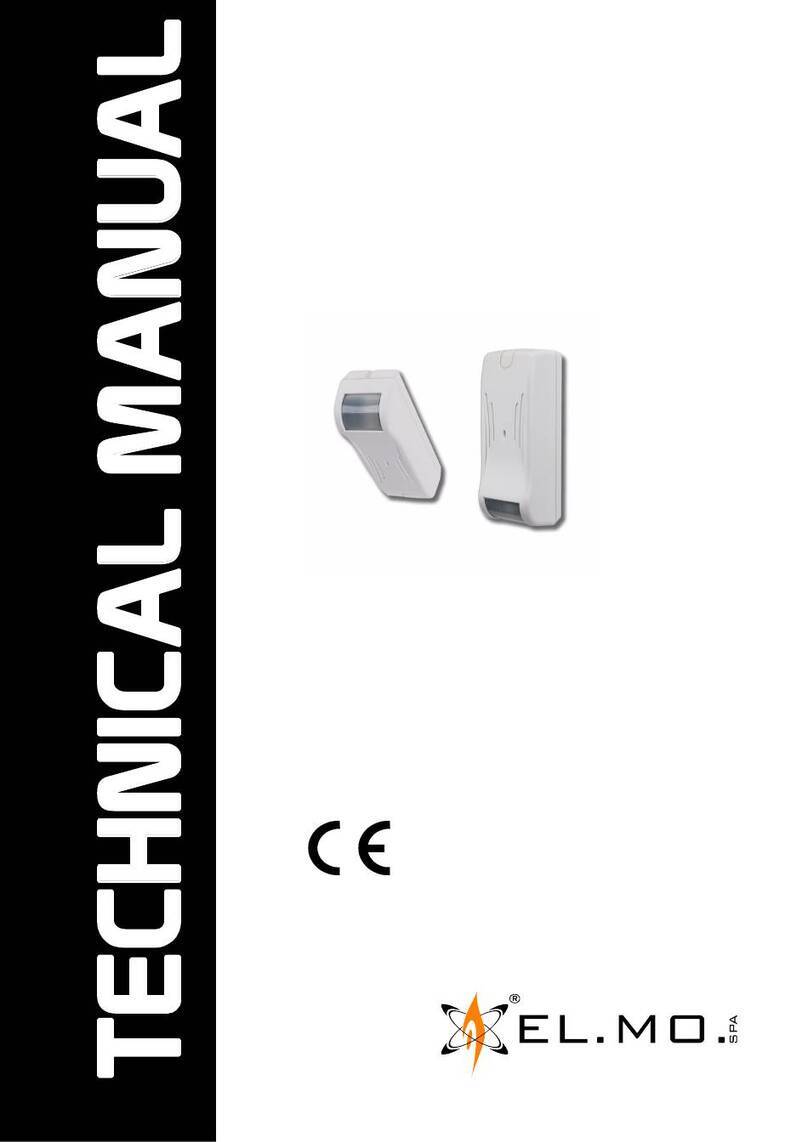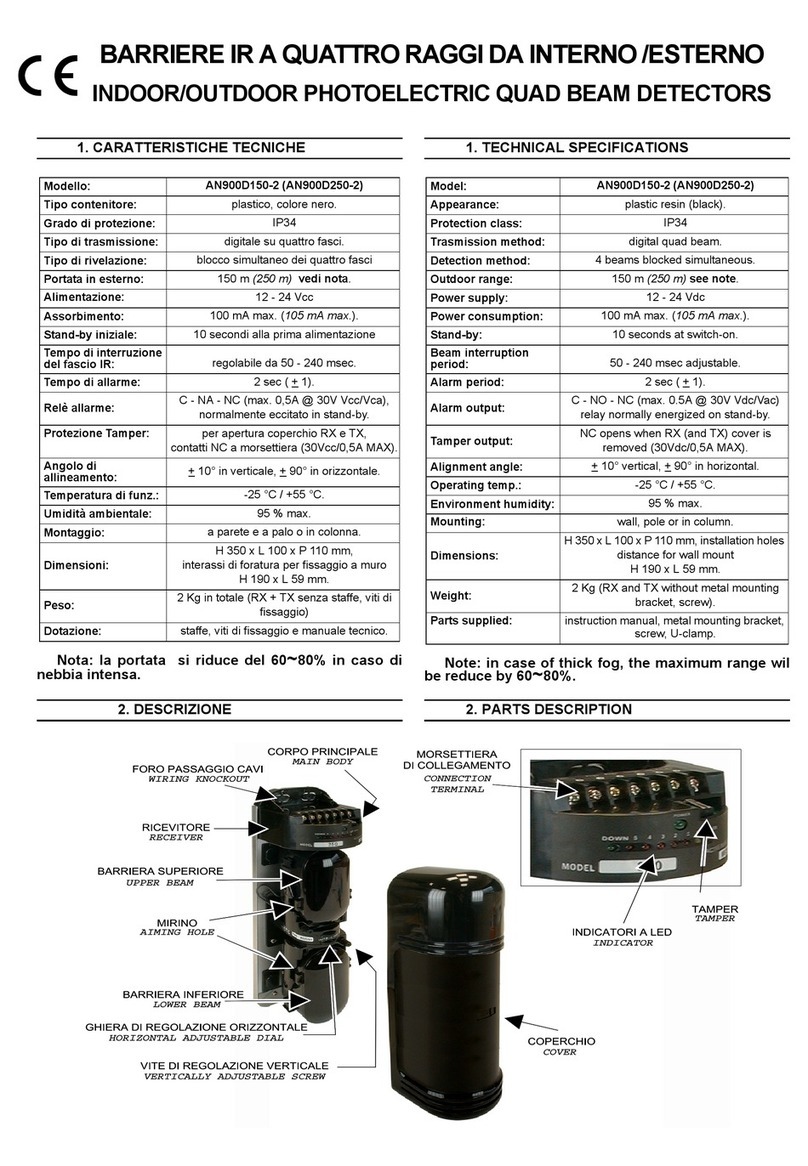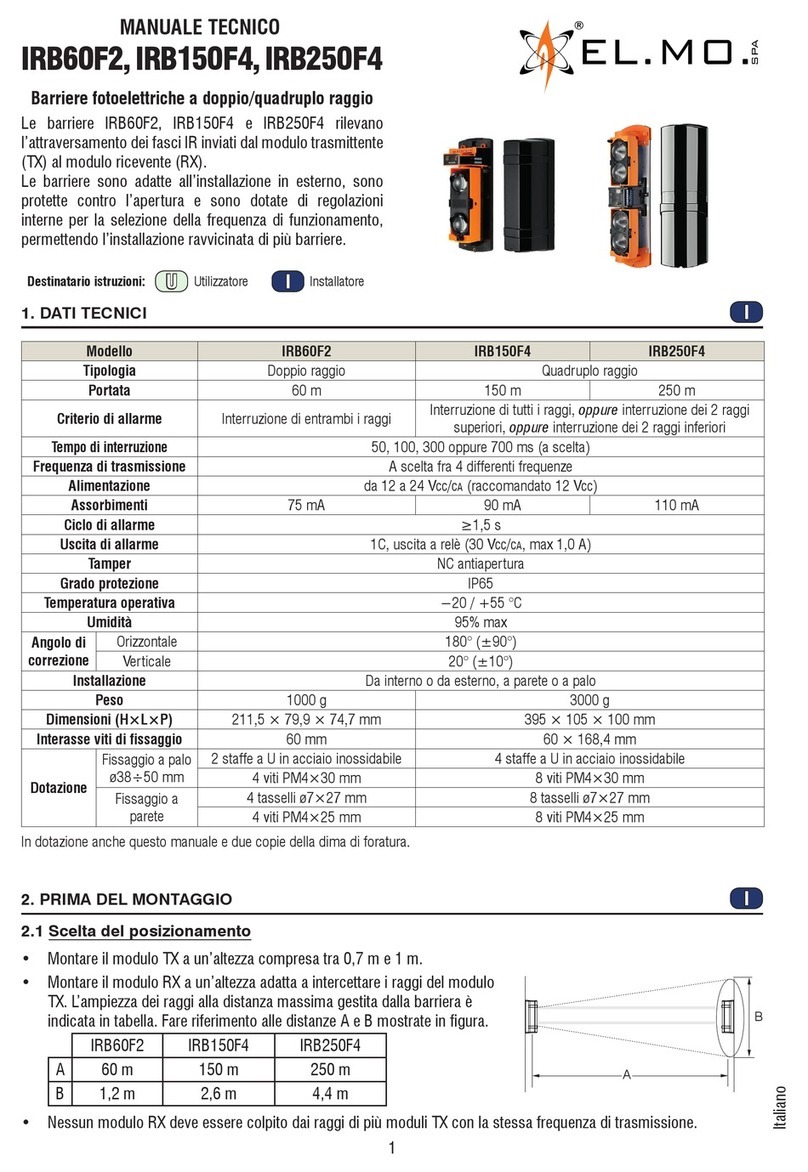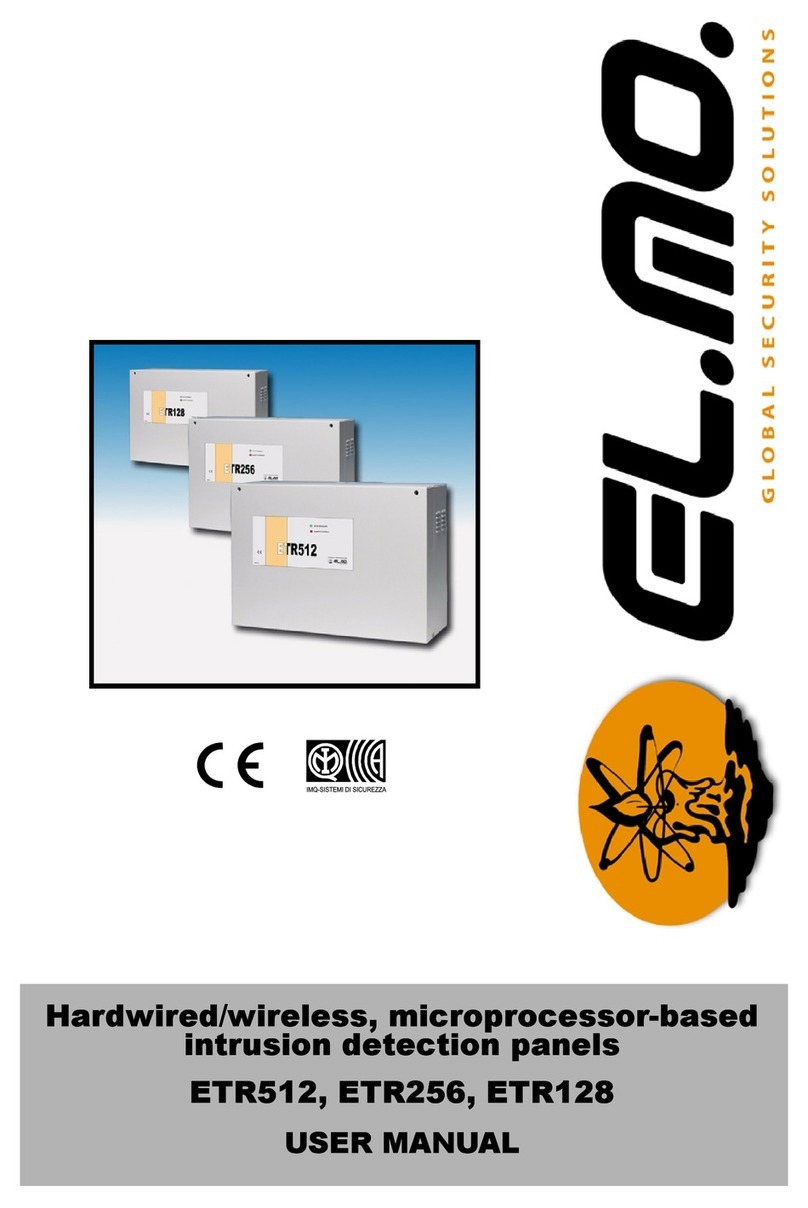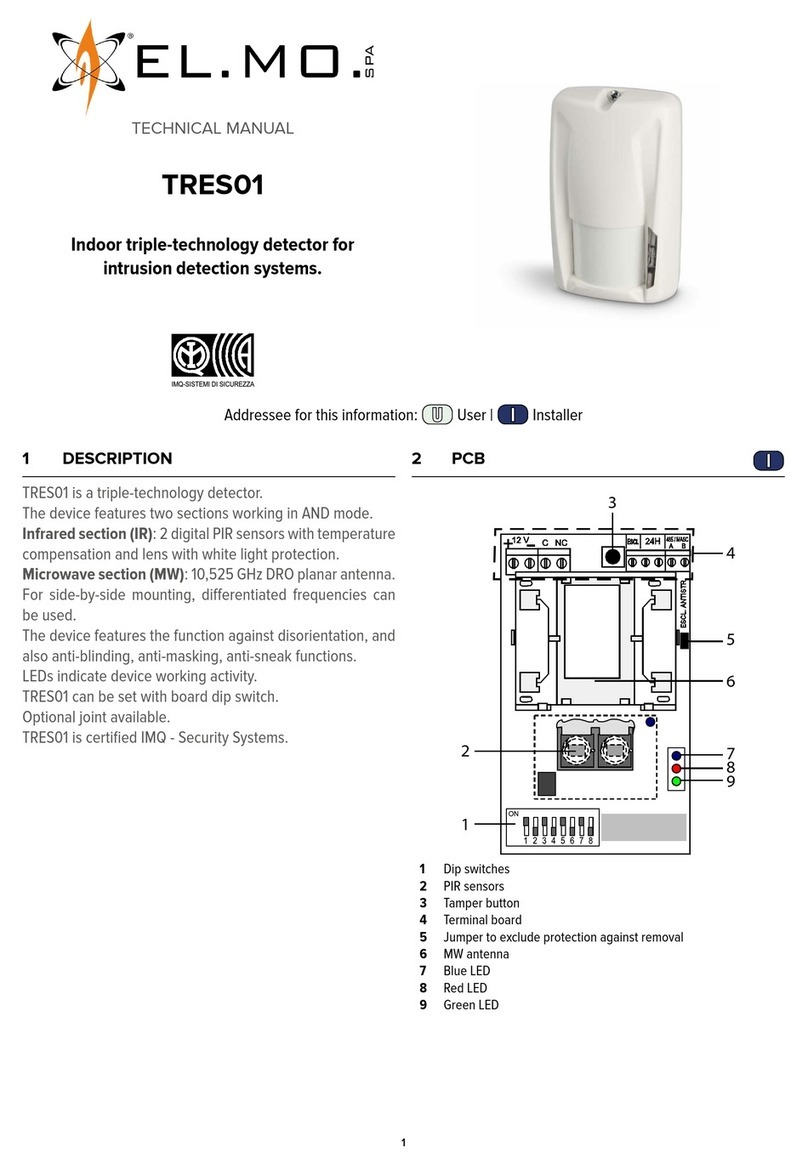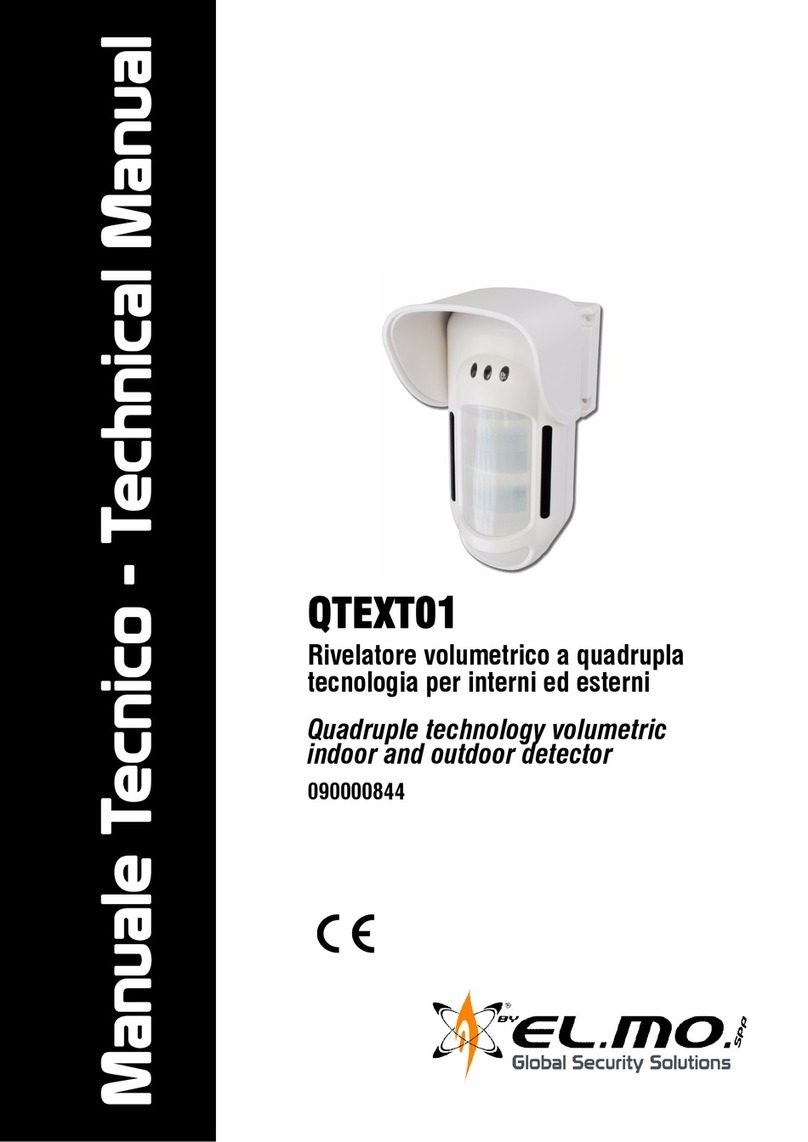
4
090051541 - HELIOSD -USER MANUAL
info@elmospa.com
elmospa.com
3. FEATURES
3. 1 General features
HELIOS control unit version "D" is equipped with a protection door with window for display and operating LED
indicators.
The manufacturer, EL.MO. S.p.A., declares that the HELIOSD radio devices comply with the 2014/53/EU direc-
tive. You can log into the elmospa.com website to read the full Declaration of Performance: registration is quick
and easy.
• Wireless system operating over differentiated frequences • Support of 16 remote controls (ATLANTE4 or
TAURUS)
• High-sensitivity and high-selectability RF section • Remote control VELA and VELAPLUS keypads (to
be counted among remote control devices)
• Support of 48 wireless detectors (LUPUS, LUPUSC,
VOLANS, VOLANSC, VIRGO, SCORPIO, DRACO) with
random-assigned 34 billion digital codes combinations
• Support of TYROS medical remote controls
• Self-learning of detector codes with R.A.C. anti-collision
protocol
•ANTISCRAMBLEforremotecontrolcodesprotection
(selectable)
• Automatic acknowledgment of DRACO smoke detector
(active 24H)
• Support of 2 NC terminal inputs to connect non-
powered detectors
When using these inputs (no. 47 and 48), the number
of wireless inputs available diminishes
• Digital transmission over differentiated, pulsed frequences
for LPDs (Low Power Devices).
• NC input for tamper detection (TAMPER)
• Management and setup of supervision procedure for
detectors and HYDRA siren
• Entry Time, Exit Day/Night Time, general alarm time
and tamper alarm time programmable
• Full management of alarm, tamper and discharged battery
alerts from wireless detectors
•Drop-outactivationalarmrelaywith C-NO-NCterminal
outputs to connect SELV-operating devices
• Management of fault alerts from DRACO detector • LED output for arming status
• Control of LYBRA, LYBRA/AL, GAIA, HYDRA, HYDRA-AL
sirens (and chrome versions HYDRACR and HYDRACR-AL)
• Built-in radio trnsmitter to control 15 sirens and 15
alarm devices/actuators
• Plastic housing featuring refined design, reduced
dimensions, and keypad protection cover door
• Built-in telephone dialler for data/voice transmissions,
with voice synthesis function and digital transmission
inFASTFORMAT,SLOWFORMAT,ADEMCOCONTACT-
ID protocols
• Back-lit LCD display and function LED indicators • 8 x 16-digit telephone numbers for voice transmission
• 16-key rubber keypad with 4 dedicated keys for ARMING e
DISARMING, DAY PARTIAL ARMING e NIGHT PARTIAL
ARMING
• 2 x 16-digit telephone numbers and 2 differentiated
codes for digital transmission to surveillance centres
• Three arming options: night, day and complete arming • 4 x15-second voice synthesis messages
(customizable)
• 6-digit user codes for management, control and configuration • FOLLOWMEfunction to easily memorisea provisional
telephone number
• Easy access to unit setup menu • Phone calls block at unit disarming
• Audible keypad tone • Phone call(s) block when listening to messages and
pressing either key 5 (single) or key 0 (all).
• High-sensitivity receiving section: it can be reduced by 3dB
using the internal jumper when testing operating range during
unit installation
• Programmable from PC with supplied browser (cable
CP8/SER2 required) or using remote assistance
browser WINASSIST.
• RF circuit with high-efficiency SMD ceramic antenna • Built-in high-intensity piezo-electric siren
• Support of HALLEY remote RF module: can be wired to
improve area coverage
• Built-in mains power unit with safety transformer
• Support of ATLAS actuators (15 max) for operating status
remote repetition
• 6V 1,2Ah back up battery (not included)
• WALK TEST function to test detectors operating mode and
the whole system
• Protected against housing opening






